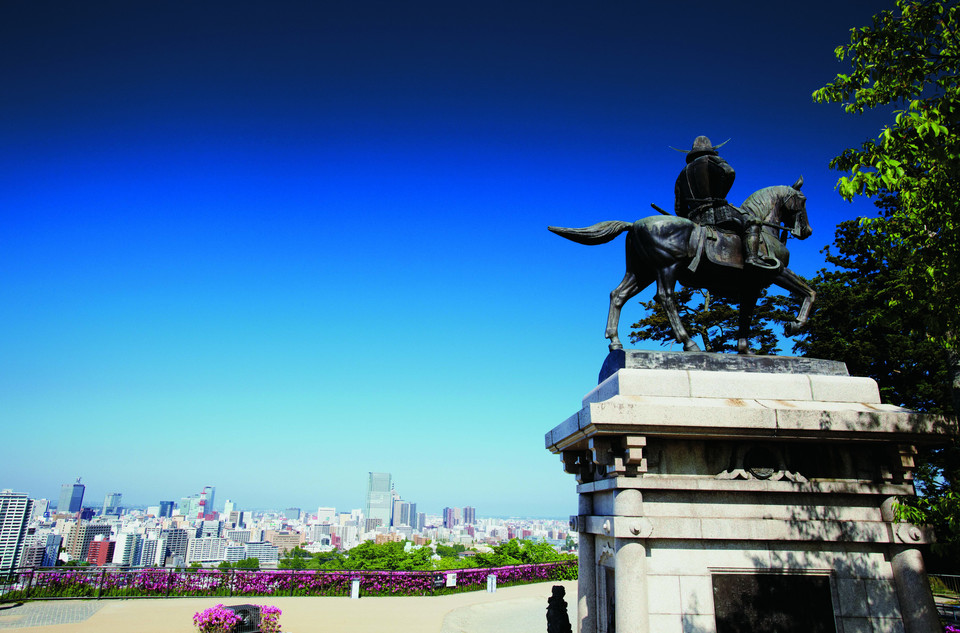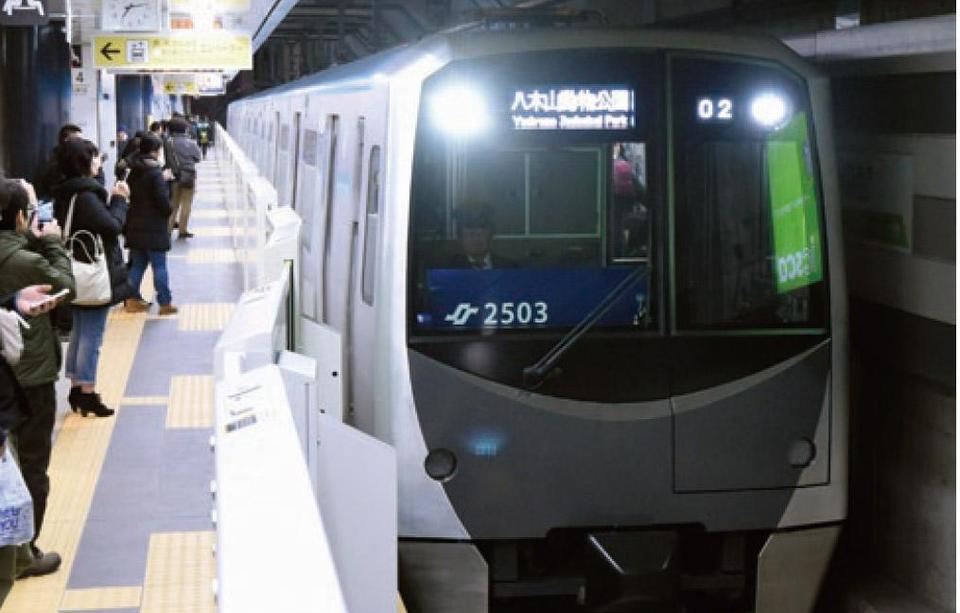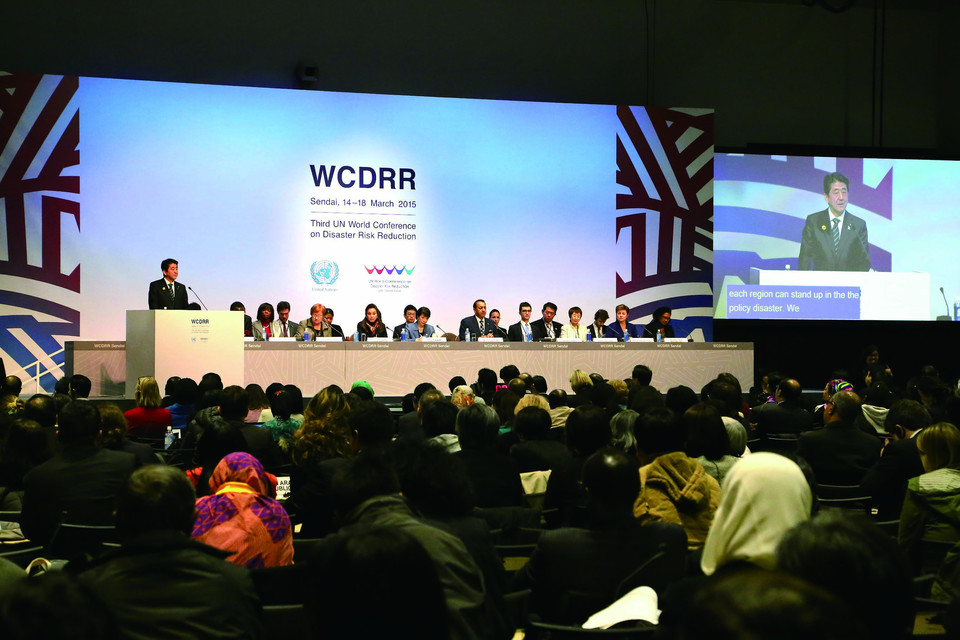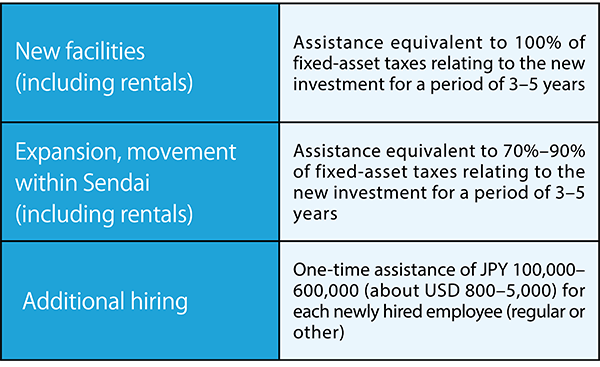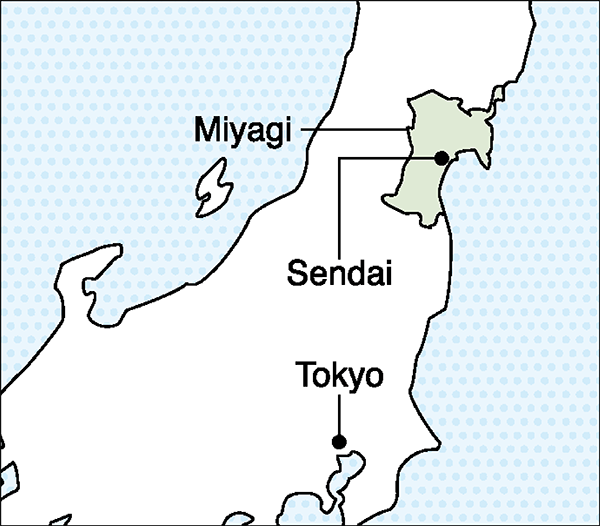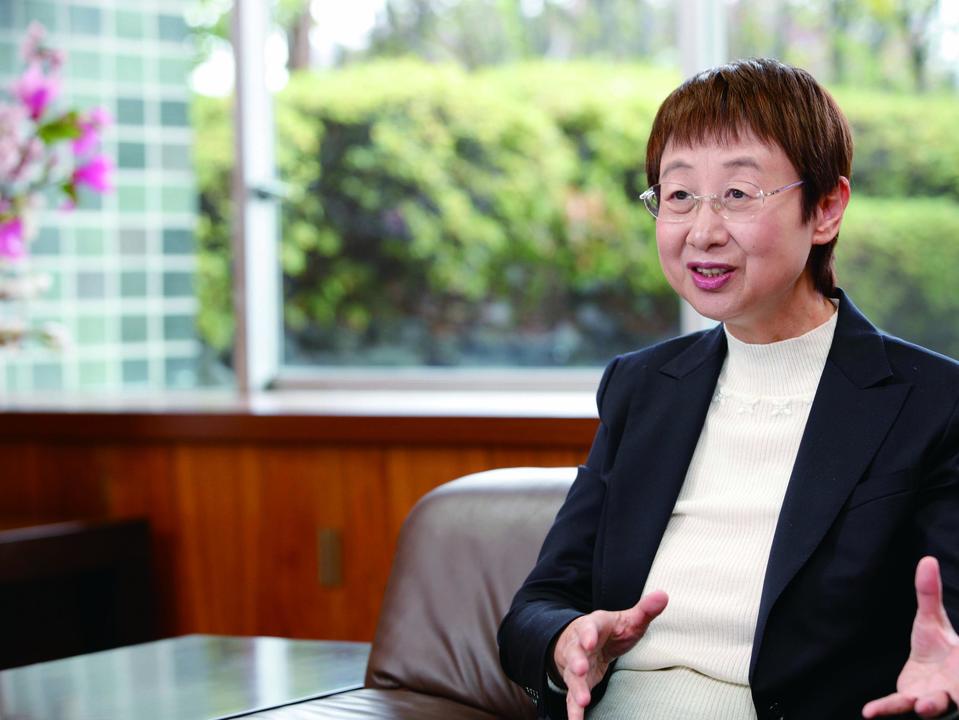Sendai, capital of Miyagi Prefecture, is located near the center of the Tohoku region, about 300 kilometers (180 miles) north of Tokyo. It has a population of one million and is famous for its abundant greenery. By Shinkansen, Japan’s high-speed rail, it is about an hour and a half from Tokyo. The city welcomes international investment and offers generous incentives for foreign companies locating there.
Watching Over Sendai
A statue of Date Masamune, the samurai leader who established Sendai as the capital of his domain in 1601, looks over the city from Aobayama Park, site of the castle he built.
One of the incentives is the system of financial assistance for business location promotion, which compensates for fixed-asset taxes on businesses in seven categories: manufacturing, R&D centers, specified call centers and back offices, highly functional distribution centers, data centers and software business, creative industries, and wide-area customer attraction industries. The city also offers job creation financial assistance for each newly hired employee. A number of foreign affiliates are already operating in Sendai, including Amazon Japan, which set up a call center there in 2012. The city provides a comfortable living environment for non-Japanese residents with its international schools, medical facilities with foreign-language-capable staff, and a hotline providing interpretation support between Japanese and six other languages.
Mayor Emiko Okuyama declares, “Many executives of foreign companies that have set up operations in Sendai have told me they were glad that they picked Sendai and that they have been able to recruit highly talented employees. Our city attracts talented young people from all around the Tohoku region.”
Sendai is home to more than 10 universities, including Tohoku University, which has produced world-class research results in fields like materials science and physics. Looking at the population by age in Sendai, the working-age (15–64) share is 65.7%, considerably higher than the national average of 61.3%.
Expanding the subway network
In December 2015 a new east-west subway line was opened, supplementing the existing north-south line.
Attracting international conferences
Sendai hosted the Third United Nations World Conference on Disaster Risk Reduction, the biggest UN conference ever held in Japan. With the success of this event, the city demonstrated the high level of its convention-hosting capabilities and gave a boost to its efforts to attract future conventions.
Mayor Okuyama also emphasizes another advantage of doing business in Sendai. “We have offices that match those in the Tokyo area in terms of having the latest equipment—but at lower rents.”
Sendai’s international strategy is not limited to attracting investment; it is also working quickly to develop itself as an international convention city. In March 2015 it hosted the Third United Nations World Conference on Disaster Risk Reduction. Mayor Okuyama took the initiative in attracting this event to Sendai, because she saw it as an opportunity for Sendai to share the lessons it learned from the Great East Japan Earthquake in 2011. The conference brought together over 6,500 participants, including government leaders, from 185 countries. Thanks to the international convention management skills that the city has developed, along with its newly built meeting facilities and transportation infrastructure improvements, notably the recently opened Tozai (east-west) subway line, Sendai is now capable of hosting international meetings of up to 10,000 people.
This May, the Group of Seven Finance Ministers and Central Bank Governors’ Meeting will be held in Sendai. This is the biggest ministerial meeting in advance of the G7 Ise-Shima Summit that Japan will be hosting later in the same month. (See pages 16-17 for more information.) Mayor Okuyama says, “I hope that we can make this important meeting, which will have a major impact on global financial and economic policy, an occasion to convey the appeal of Sendai and the Tohoku region, to expand our interactions with the rest of the world, and to promote additional investment. I sincerely look forward to welcoming visitors from around the world to Sendai.”
Financial assistance for business location promotion
The above-indicated assistance amounts, payment years, payment limits, and other particulars differ depending on the type of assistance.
Mayor Emiko Okuyama
Born in Akita Prefecture. After graduating from the Faculty of Economics at Tohoku University, she became a municipal employee in Sendai, where she served in posts including assistant senior director of the Lifelong Learning Department, superintendent of the Sendai City Board of Education, and vice mayor. She has been the mayor of Sendai since 2009 and is now serving her second four-year term.































































































































